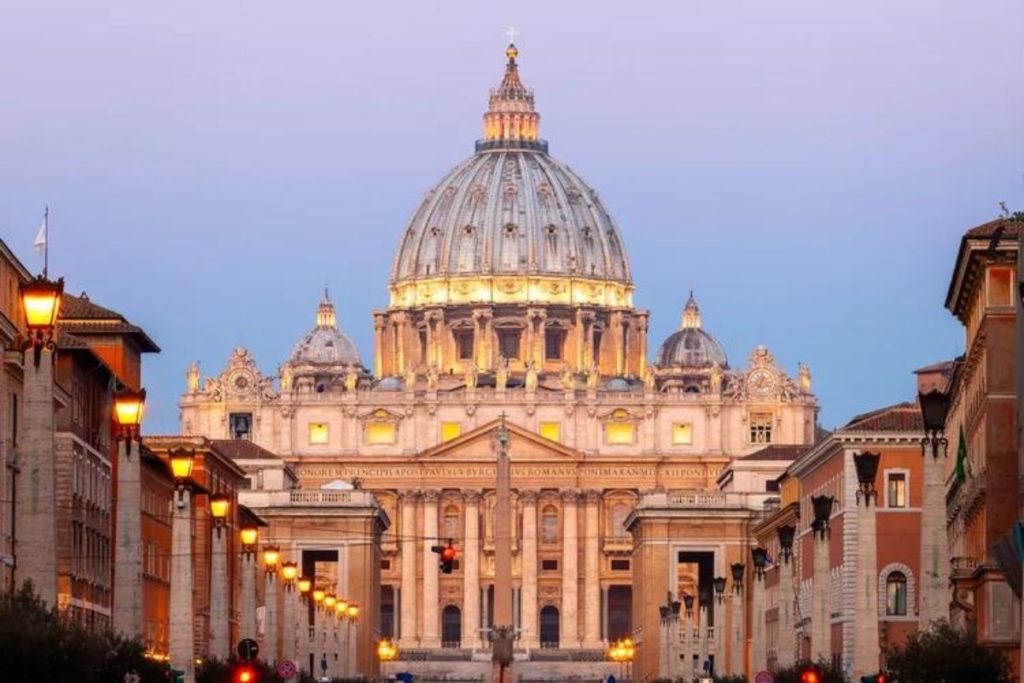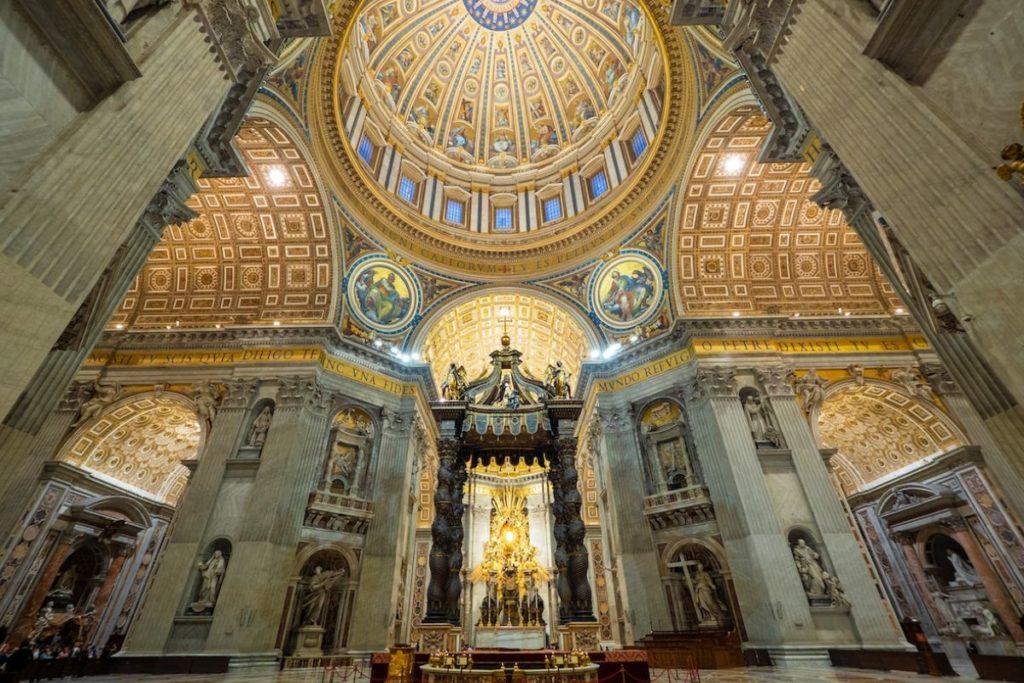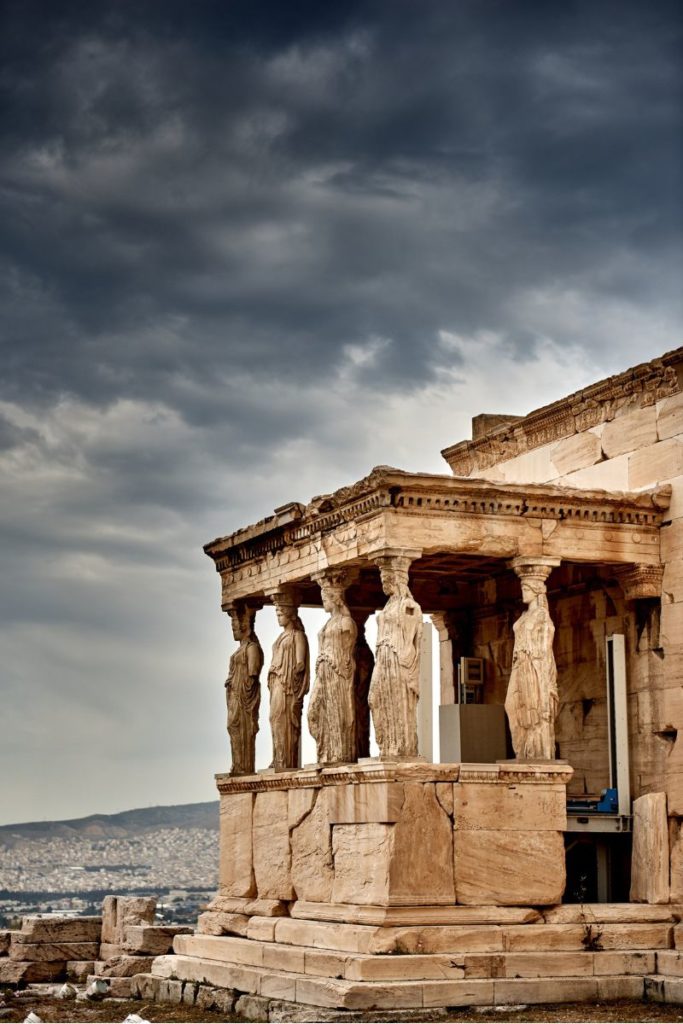A Guide to its Definition, Influences, and Legacy

Renaissance architecture, characterized by its grandeur and attention to detail, is a remarkable testament to the artistic and intellectual achievements of the 14th to 17th centuries. This architectural style, which emerged during the Renaissance period in Europe, brought forth a renewed appreciation for the classical forms of Ancient Greece and Rome. From the magnificent domes of St. Peter’s Basilica to the intricate façades of the Palazzo Vecchio, Renaissance architecture exudes a sense of harmony and balance. In this blog post, we will delve into the key features and influential figures of Renaissance architecture, exploring the profound impact this movement had on the world of design and construction. Let’s embark on a journey through time to uncover the beauty and significance of this architectural marvel.
What is Renaissance Architecture?
Renaissance architecture was an influential architectural style that emerged in Europe during the Renaissance period, from the 14th to the 17th century. This architectural movement, also known as “Rinascimento” in Italian, was characterized by a revival of the classical principles of ancient Greek and Roman architecture.
Definition of Renaissance Architecture
Renaissance architecture can be defined as an architectural style that encapsulates the rebirth and reinterpretation of classical architectural forms, proportions, and ideals. It emerged as a reaction to the predominantly Gothic style that prevailed during the Middle Ages.
Characteristics of Renaissance Architecture
Renaissance architecture exhibits several distinct characteristics that set it apart from other architectural styles:
- Classical Influence: Renaissance architects drew inspiration from the architectural styles of Ancient Greece and Rome. They admired classical architecture’s clean lines, symmetry, and harmonious proportions.
- Symmetry and Proportion: Symmetry played a crucial role in Renaissance architecture. Buildings were designed with balanced proportions, where every element had a corresponding counterpart on the opposite side, creating a sense of harmony and order.
- Humanism and Idealism: Renaissance architects embraced the humanist philosophy, emphasizing the importance of human achievement in art and design. They sought to create buildings that were functional, aesthetically pleasing, and representative of human potential.
- Use of Classical Orders: Renaissance architects incorporated the classical architectural orders, such as Doric, Ionic, and Corinthian, into their designs. These orders provided a structured system for organizing architectural elements, such as columns and entablatures.
- Symmetrical Façades: Renaissance buildings often featured symmetrical facades with a central axis. This created a sense of balance and grandeur, with a clear hierarchy of elements.
- Domed Roofs and Arches: Renaissance architecture revived domes and arches, reminiscent of the Roman architectural style. These elements added elegance and grace to buildings, creating a sense of grandeur and monumentality.
- Fine Detailing and Ornamentation: Renaissance buildings showcased intricate detailing and ornamentation, including sculptures, relief carvings, and decorative motifs. These embellishments added richness and visual interest to the architectural design.

Overall, Renaissance architecture transformed the way buildings were designed and shaped the future of architecture. Its influence can still be seen in many architectural styles today, making it a significant period in architectural history.
Influences on Renaissance Architecture
The architecture of the Renaissance was greatly influenced by various factors, including Ancient Greek and Roman architecture, the concept of Humanism, and the rediscovery of classical ideas. Let’s explore each of these influences in more detail.
Ancient Greek and Roman Architecture
Ancient Greek and Roman architecture played a significant role in shaping Renaissance architectural style. The Renaissance architects looked to these ancient civilizations’ architectural achievements for inspiration and guidance.
During this period, buildings were designed to reflect the ideals of harmony, balance, and proportion. Columns, arches, and domes became prominent features in Renaissance architecture, all borrowed from the architectural styles of Ancient Greece and Rome.

Humanism and the Rediscovery of Classical Ideas
Humanism was a cultural and intellectual movement during the Renaissance that emphasized the importance of human values, achievements, and potential. With the revival of interest in classical learning, scholars began to rediscover the works of ancient philosophers, artists, and architects.
This newfound interest in classical ideas greatly influenced Renaissance architects. They sought to create buildings reflecting ancient Greek and Roman architecture’s rationality, symmetry, and beauty. The humanist philosophy also impacted the designs by emphasizing the connection between architecture and human well-being.
The reintroduction of classical architectural elements, such as pediments, columns, and symmetrical designs, became essential components in Renaissance buildings and added a sense of grandeur and elegance to their structures.
In conclusion, Renaissance architecture was shaped by the influences of Ancient Greek and Roman architecture and the ideas of Humanism. The architects of this era looked to the past with reverence and admiration, incorporating classical elements into their designs. These influences created a distinct architectural style that embodied both the ancient world’s rationality and the Renaissance’s humanist values.
Key Features of Renaissance Architecture
Renaissance architecture, a distinctive style that emerged in Europe during the 14th to 17th centuries, is known for its grandeur, elegance, and harmonious proportions. It drew inspiration from the classical architecture of ancient Greece and Rome, resulting in buildings that exuded beauty and a sense of order. This section will explore three key features of Renaissance architecture: Symmetry and Proportion, Classical Orders, and Dome and Vaulted Ceilings.
Symmetry and Proportion
One of the defining characteristics of Renaissance architecture is its emphasis on symmetry and proportion. Architects of this era sought to create buildings that were visually balanced and pleasing to the eye. This was achieved by using mathematical ratios and geometric principles to determine the ideal placement of elements within a structure.
Symmetry, in particular, played a crucial role in Renaissance architecture. Buildings were often designed with a central axis, where the elements on one side mirrored those on the other. This symmetrical arrangement added visual harmony and conveyed a sense of order and stability.
Classical Orders
The Renaissance architects looked to ancient Greek and Roman architecture for inspiration, leading to the revival of classical orders in their designs. The three main classical orders—Doric, Ionic, and Corinthian—were reintroduced and used extensively in Renaissance buildings.
Each order featured a distinctive proportion, detailing, and decorative elements. The Doric order, known for its simplicity and robustness, was often employed in more reserved and masculine structures. With its scrolled capitals, the Ionic order conveyed a sense of grace and elegance and was commonly used in buildings associated with knowledge and learning. Lastly, the Corinthian order, characterized by its ornate, leafy capitals, evoked a sense of opulence and luxury.
Dome and Vaulted Ceilings
Renaissance architecture saw the revival and refinement of domes and vaulted ceilings. These architectural features added structural strength and created impressive interior spaces that were visually striking and awe-inspiring.
Domes, with their rounded shape, were often used to crown the central spaces of churches, courtyards, and public buildings. They provided a sense of grandeur and allowed for the diffusion of natural light, creating a celestial ambiance within the enclosed space.
Vaulted ceilings, on the other hand, consisted of a series of arches that intersected to form a canopy-like structure. They were commonly employed in cathedrals, palaces, and halls, allowing for spacious interiors and enhancing acoustics for religious ceremonies and other gatherings.
In conclusion, Renaissance architecture is characterized by its commitment to symmetry and proportion, the revival of classical orders, and the use of dome and vaulted ceilings. These features exemplify the meticulous craftsmanship of the era and showcase the Renaissance architects’ pursuit of beauty and harmony in their creations.
Famous Renaissance Architects
Filippo Brunelleschi
Filippo Brunelleschi was an Italian architect and engineer who played a significant role in shaping Renaissance architecture. Born in 1377, Brunelleschi is best known for his magnificent dome atop the Florence Cathedral, the Duomo.
Brunelleschi’s innovative architectural designs and engineering prowess enabled him to create awe-inspiring structures during the Renaissance. His mastery of linear perspective, an artistic technique enhancing the illusion of depth and space, greatly influenced architectural design principles.
Andrea Palladio
Andrea Palladio, an Italian architect from the 16th century, is considered one of the most influential figures in Renaissance architecture. His architectural style, inspired by ancient Roman and classical Greek elements, impacted the field.
Palladio’s designs often featured harmonious proportions, symmetrical layouts, and the use of elements such as columns and pediments. His treatise, “The Four Books of Architecture,” became a fundamental guidebook for architects and an essential source for Classical architecture studies.
Leon Battista Alberti
Leon Battista Alberti, an Italian Renaissance architect, excelled in various fields, including architecture, mathematics, and literature. His contributions to architecture were revolutionary, as he incorporated classical elements into his designs while adapting them to contemporary needs.
Alberti’s architectural treatise, “De re Aedificatoria,” established him as one of the Renaissance’s prominent architectural theorists. He emphasized proportion, symmetry, and the use of classical orders in his designs, making them visually pleasing and functional.
One can better understand the remarkable achievements and distinctive styles that defined Renaissance architecture by studying the works of Filippo Brunelleschi, Andrea Palladio, and Leon Battista Alberti. Their contributions continue to inspire and influence architects and artists to this day.
Iconic Renaissance Buildings
Renaissance architecture is known for its grandeur, elegance, and attention to detail. Many iconic buildings that continue to awe and inspire us today were constructed during this period. Explore three iconic Renaissance buildings: St. Peter’s Basilica, Florence Cathedral (Duomo), and the Palace of Versailles.
St. Peter’s Basilica
St. Peter’s Basilica, located in Vatican City, is a true masterpiece of Renaissance architecture. Designed by renowned architects such as Michelangelo and Gian Lorenzo Bernini, this grand basilica showcases the pinnacle of Renaissance design and craftsmanship.
The sheer size of St. Peter’s Basilica is awe-inspiring. Its massive dome, designed by Michelangelo, dominates the skyline of Rome, reaching a height of 452 feet (137.77 m). The basilica’s interior is equally breathtaking, with its ornate decorations, intricate mosaics, and stunning works of art.
Florence Cathedral (Duomo)
Also known as the Duomo, it is a landmark of Renaissance architecture in Florence, Italy. The centerpiece of the cathedral is its magnificent dome, designed by Filippo Brunelleschi.
The dome of the Florence Cathedral is a true engineering marvel of the Renaissance. Standing at 375 feet (114.3 m) tall, it was the largest dome in the world when it was completed in 1436. The cathedral’s exterior is adorned with intricate marble panels, while the interior houses beautiful frescoes and stained-glass windows.
 Florence Cathedral (Photo by Pixabay)
Florence Cathedral (Photo by Pixabay)
Palace of Versailles
The Palace of Versailles, located near Paris, France, epitomizes opulence and grandeur in Renaissance architecture. Originally a hunting lodge, it was transformed by King Louis XIV into a magnificent palace that served as the political and cultural center of the French monarchy.
The Palace of Versailles boasts stunning gardens, lavish interiors, and intricate details that showcase the wealth and power of the French monarchy. From the Hall of Mirrors with its breathtaking chandeliers to the ornate ceilings and grand staircases, every aspect of the palace exudes elegance and luxury.
These iconic Renaissance buildings serve as enduring symbols of the architectural achievements of the era. Their beauty, craftsmanship, and historical significance continue to captivate visitors worldwide, providing a glimpse into the grandeur of the Renaissance period.
Regional Differences in Renaissance Architecture
Italian Renaissance Architecture
With its rich history and impeccable craftsmanship, Italian Renaissance architecture remains a prominent and influential movement to this day. Characterized by its harmonious proportions, symmetrical designs, and grandeur, Italian Renaissance architecture blends aesthetics, functionality, and innovation.
During this period, architects such as Filippo Brunelleschi and Andrea Palladio emerged as pioneers, introducing groundbreaking architectural elements. The iconic dome of the Florence Cathedral, designed by Brunelleschi, is a testament to Italian Renaissance architects’ technical genius.
Classical architectural features, such as columns, arches, and domes, became a defining characteristic of Italian Renaissance architecture. Buildings were balanced and harmonious, incorporating mathematical principles and proportionate scaling.
French Renaissance Architecture
Influenced by the Italian Renaissance, French Renaissance architecture evolved with its distinctive characteristics and charm. This period witnessed a fusion of classical elements and Gothic traditions, resulting in a unique architectural style often called “French Renaissance Gothic.”
Prominent examples of French Renaissance architecture include the Château de Chambord and the Louvre Palace in Paris. These structures showcase the ornate detailing, intricate sculptural work, and delicate tracery commonly found in French Renaissance buildings.
French architects, such as Philibert Delorme and Pierre Lescot, played pivotal roles in shaping the architectural landscape of the era. Their emphasis on ornamental design, graceful proportions, and the utilization of decorative motifs, such as the fleur-de-lis, set French Renaissance architecture apart.
English Renaissance Architecture
The English Renaissance brought a distinct interpretation to the Renaissance architectural style. Often referred to as Elizabethan architecture, it emerged during the reign of Queen Elizabeth I and continued to flourish into the Stuart period.
English Renaissance architecture seamlessly integrated elements from earlier Gothic traditions with Renaissance aesthetics. This resulted in the creation of elaborate, half-timbered structures, known as Tudor architecture, characterized by their intricate woodwork and lavish ornamentation.
Prominent examples of English Renaissance architecture include buildings like Hampton Court Palace and the Globe Theatre. These structures showcase the unique use of timber framing, decorative brickwork, and gabled roofs that became synonymous with the era.
In conclusion, the regional differences in Renaissance architecture demonstrate how the movement’s principles and ideals were interpreted and adapted in different cultural contexts. From the grandeur of Italian Renaissance architecture to the fusion of classical and Gothic influences in French Renaissance architecture and the distinctive features of English Renaissance architecture. Each region brought its own flair and innovation to this extraordinary period of architectural history.
Legacy of Renaissance Architecture
During the Renaissance, architecture underwent a significant transformation that left a lasting legacy in the design and construction world. The principles and styles developed during this time continue influencing modern architecture in various ways. In this section, we will explore two key aspects of the legacy of Renaissance architecture: its influence on neoclassical architecture and the preservation and restoration efforts to safeguard these architectural treasures.
Influence on Neoclassical Architecture
The Renaissance period witnessed a revival of interest in the classical architecture of Ancient Greece and Rome. This fascination with the classical past resulted in neoclassical architecture, a style that sought to emulate the grandeur and elegance of ancient buildings. The principles of proportion, symmetry, and harmony that were perfected during the Renaissance profoundly impacted the development of neoclassical architecture.
Neoclassical architects, such as Andrea Palladio and Christopher Wren, drew inspiration from Renaissance buildings and incorporated classical elements into their designs. Columns, domes, pediments, and other elements borrowed from the ancient world became defining characteristics of neoclassical structures. This enduring influence of Renaissance architecture can be observed in iconic buildings such as the St. Paul’s Cathedral in London and the White House in Washington, D.C.
Preservation and Restoration Efforts
Preserving the architectural heritage of the Renaissance has been a priority for scholars and enthusiasts. Many Renaissance structures, such as churches, palaces, and public buildings, have faced the challenges of time, weathering, and human intervention. However, concerted efforts have been made to conserve and restore these architectural gems, ensuring their continued existence for future generations to appreciate.
Preservation initiatives involve meticulous research, documentation, and structural analysis to understand the original design intent of Renaissance buildings. Skilled artisans and conservators work hand in hand to carefully restore damaged elements, using traditional materials and techniques to maintain historical accuracy. Conservation organizations and government agencies collaborate to provide funding and expertise for these projects, recognizing the cultural significance of Renaissance architecture.
In addition to physical restoration, digital technologies have also played a crucial role in preserving Renaissance architecture. Advanced tools like 3D scanning and virtual reality allow for accurate documentation and immersive experiences, ensuring that even the most intricate details of these architectural marvels are faithfully recorded and accessible.
The legacy of Renaissance architecture lives on through its influence on subsequent architectural movements and the ongoing efforts to protect and restore these remarkable structures. By integrating classical ideals of beauty, proportions, and harmony, Renaissance architects have shaped their era and laid the foundation for the architectural wonders that continue to inspire us today.
Conclusion
In conclusion, Renaissance architecture can be defined as a revolutionary movement that emerged during the 14th to 17th centuries in Europe. A renewed interest in the classical forms and principles of ancient Greek and Roman architecture characterized it. The architects of the Renaissance sought to create harmonious and balanced structures that reflected the ideals of humanism and rationality.
During the Renaissance, architects such as Filippo Brunelleschi, Leon Battista Alberti, and Andrea Palladio pioneered new architectural techniques and designs that are still admired and studied today. Their innovative use of perspective, symmetry, and proportion transformed the built environment and set the foundation for the following architectural styles.
Renaissance architecture shaped the physical landscape of cities and influenced how people interacted with their surroundings. The grandeur and beauty of Renaissance buildings’ intricate details and monumental facades were meant to inspire awe and reverence. These structures served as symbols of power, wealth, and cultural achievement.
Despite the passage of time, Renaissance architecture continues to captivate and inspire architects and designers worldwide. Its emphasis on classical ideals and the integration of art, science, and mathematics have left a lasting impact on architecture. By studying and appreciating Renaissance architecture, we gain a deeper understanding of our architectural heritage and the timeless principles that still guide our designs today.
In conclusion, Renaissance architecture is a testament to the human desire for beauty, harmony, and innovation in the built environment. Its enduring legacy reminds us of the power of architecture to shape our lives and inspire generations to come.
